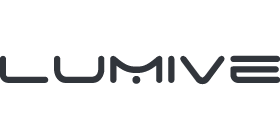
Smart Home Camera: Navigating the World of Connectivity and Storage
Smart cameras have become indispensable tools for security, monitoring, and peace of mind in today’s interconnected world. With the ability to keep tabs on your home, pets, or loved ones from anywhere, these devices offer unparalleled convenience. However, with a plethora of options available, making an informed choice can be daunting. This article will delve into the intricacies of smart home cameras, focusing on their storage capabilities and internet dependencies, by comparing two popular options: Local Storage Cameras and Cloud-based Cameras.
Local Storage Cameras: The Power of Direct Access
Local storage cameras save their footage directly on the device or on a network-attached storage (NAS) system within your home. This method offers quick access to recordings without relying on an external server or internet connection.
Pros:
- Immediate Access: Footage can be accessed quickly without the need for internet connectivity.
- Cost-Effective: No recurring fees associated with cloud storage subscriptions.
- Data Privacy: Your footage remains within your premises, reducing concerns about data breaches or third-party access.
Cons:
- Limited Storage: Depending on the device’s capacity, you might run out of space, leading to older footage being overwritten.
- No Remote Access: Without an active internet connection, accessing footage remotely can be challenging.
Local Storage Cameras:
- Arlo Pro 3 & Arlo Ultra: While Arlo offers cloud storage options, these models also come with a base station that has a local storage option. You can connect an external hard drive to the base station to store videos locally.
- Wyze Cam: Known for its affordability, the Wyze Cam offers local storage through a microSD card slot. This allows continuous recording, independent of any cloud services.
- Reolink Argus 2: This camera supports microSD cards for local recording. It’s battery-powered and offers flexibility in placement around your home.
- Blink XT2: Owned by Amazon, Blink cameras come with local storage options. The Sync Module 2, which is part of the system, supports USB drives for local video storage.
Cloud-based Cameras: The Flexibility of the Cloud
Cloud-based cameras send their recordings to a remote server, allowing users to access footage from anywhere with an internet connection. This method offers the convenience of remote access but often comes with monthly fees.
Pros:
- Remote Access: View live feeds or recorded footage from anywhere using a mobile app or web portal.
- Unlimited Storage: Depending on the subscription, you can store vast amounts of footage without worrying about running out of space.
- Automatic Updates: These cameras can receive software updates directly, ensuring optimal performance and security.
Cons:
- Subscription Fees: Most cloud-based solutions come with monthly or yearly fees.
- Data Privacy Concerns: Storing footage on external servers can raise concerns about data privacy and potential breaches.
Cloud Storage Cameras:
- Nest Cam (by Google): One of the most popular smart camera for homes, Nest Cam offers high-quality video and integrates seamlessly with other Google products. It relies on a subscription service called Nest Aware for cloud storage.
- Ring Cameras (by Amazon): Ring, which offers a range of cameras from doorbells to floodlights, provides cloud storage options. Videos are stored in the cloud, accessible through a subscription plan.
- Canary: Canary cameras come with a free plan that offers limited cloud storage for recent clips. For extended storage and additional features, they have a premium subscription.
- Logitech Circle 2: This camera offers free cloud storage for the most recent 24 hours of footage. For extended storage and more features, there’s a subscription plan available.
Internet Dependency: A Critical Consideration
Most modern smart cameras require an active internet connection for optimal functionality. This dependency has implications:
- Downtime Risks: If your internet connection is unstable or goes down, certain features like real-time alerts or remote access might become unavailable.
- Data Security: Cameras connected to the internet are potential targets for hacking attempts. Ensure you change default passwords and regularly update software to prevent unauthorized access.
Which is the Right Choice?
If you prioritize data privacy and want to avoid recurring fees, local storage cameras might be the way to go. However, if you value the ability to access footage from anywhere and don’t mind paying for cloud storage, cloud-based cameras offer great flexibility.
In conclusion, both local storage and cloud-based cameras have their merits. Your choice will depend on your specific needs, budget, and preferences. Always conduct thorough research and consider factors like storage needs, internet stability, and data privacy before making a decision.
Finally, In the realm of smart home security, discretion is key. While cameras enhance security, their placement matters. Focus on surveillance-centric areas like entrances and avoid sensitive spots like bedrooms. Given the known security breaches with cloud-based cameras, it’s wise to exercise caution. Prioritize privacy in your placement decisions.








